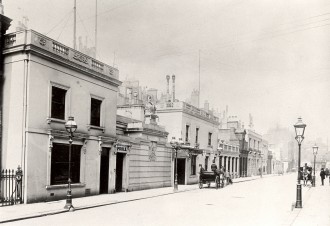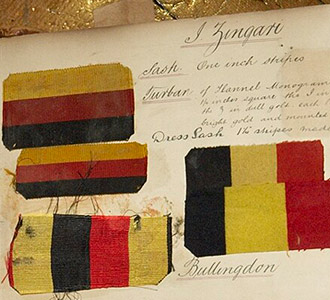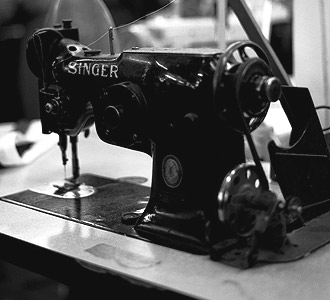1623: Pickadilly Hall, the country home of social climbing Strand tailor turned property developer Robert Baker and the origin of one of London’s most celebrated place names, is first recorded on the site of today’s Great Windmill Street in Soho. The hall took its name from pickadils or pickadillos: ruffs that were fashionable in the Jacobean era. When King James I married Elizabeth of Bohemia in 1613, collars recorded in the bride’s trousseau were made by Robert Baker. It is rumoured that Queen Elizabeth, a customer of Baker’s, coined the name for his palatial residence.
1668: Burlington House, arguably the grandest Piccadilly palace, is constructed for Richard ‘The Rich’ Boyle, first Earl of Burlington – a Restoration courtier during the reign of King Charles II – in what was then verdant countryside a mile from St James’s Palace and adjacent to the site of Pickadilly Hall.
1689: In the year of William & Mary’s coronation, the tailoring house now known as Ede & Ravenscroft is established by the Shudall family. The firm goes on to hold the Royal Warrant as robe makers to every monarch from King George III to our present Queen. Only in 1921 is it finally christened Ede & Ravenscroft. It flourishes to this day as the oldest surviving family-owned tailoring firm in England, if not the world.
1715: Handel stays with Lord Burlington and is given rooms at the back of Burlington House because he likes the sight of fields and trees from the stateroom window. Mayfair is still a grand, aristocratic enclave while the former Tudor palaces on the Strand and the side streets of St James’s are developed into tradesmen’s enclaves riddled with tailor’s shops.
1723: Despite marrying heiress Lady Dorothy Savile, the spendthrift 3rd Earl of Burlington is forced to sell the land behind Burlington House. Queensbury House, designed by Venetian architect Giacomo Leoni, is completed on the site of Burlington House’s extensive gardens for the 3rd ‘Double Duke’ of Queensbury and Dover. The house dominates the west side of what is to become Savile Row. Playwright John Gay writes The Beggar’s Opera at Queensbury House.
1733: The Daily Post reports that ‘a new pile of buildings’ is going to be erected near Swallow Street by the Right Hon. The Earl of Burlington which is to be named Savile Street. Named for his Countess, Dorothy, Savile Row, as it becomes known, is born. Future Prime Minister William Pitt becomes a tenant in the new dwellings, as do Dr John Arbuthnot and Dr Simon Burton, thus introducing the first generation of tradesmen to the Row. The Countess of Suffolk takes up residence at No 15 Savile Street (now Henry Poole & Co) in 1735.
1750: John Ross opens a whip maker’s shop at No 238 Piccadilly that is the foundation stone for the firm we now know as Swaine Adeney Brigg. James Swaine went on to buy John Ross out in 1789 and acquire the Royal Warrants of King George III and his sons the Prince of Wales (later King George IV) and the Dukes of York, Clarence, Kent, Cumberland and Cambridge.
1760: Thomas Hawkes (the founding father of the firm we now know as Gieves & Hawkes) comes to London to make his fortune. He is employed as a journeyman (a runner) for Mr Moy the velvet cap-maker on Swallow Street. Mr Moy was ‘on the cod’ (Savile Row slang for drinking heavily), leaving the ambitious young Hawkes free to cultivate his aristocratic clientele. By 1771, Moy is dead and Hawkes opens his eponymous tailoring shop in London. Hawkes dresses both King George III and his glamorous son ‘Prinny’ the Prince Regent.
1765: Hatter James Lock & Co, founded in 1676, relocates to No 6 St James’s Street where the firm remains to this day, making it the oldest family-owned hatter in the world.
1767: The embroiderer and manufacturer of laces and cords for civil and military regalia M. Hand & Company is established in Spitalfields by Mr Hand, a Huguenot refugee from Flanders.
1789: The French Revolution heralds the death of decadent 18th century aristocratic court dress. The Bastille is stormed on the 14th of July and King Louis XVI and Queen Marie Antoinette are removed from the palace of Versailles and imprisoned in Paris pending their death by guillotine in 1793. The fall of the Ancien Régime ends France’s cultural dominance in Europe and brings to an end the fashion for overtly flamboyant men’s clothing. The birth of British bespoke tailoring as we know it today is inspired by ‘honest’ English country gentlemen’s riding attire. It is this elegant, understated aesthetic that George ‘Beau’ Brummell espouses a decade later and introduces to the Prince Regent’s court at Carlton House.





